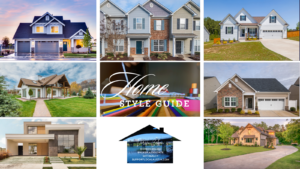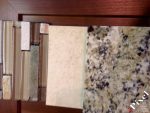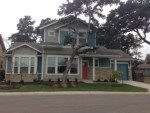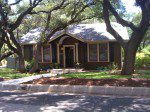 They say you are what you eat. What kind of home you purchase can say something about who you as well. Austin is known for being weird. The eclectic mix of art, music, and culture is as unique as the architecture, landscaping, and aesthetic designs of Austinites who call this city home. There is quite a buffet of home styles in Austin to choose from.
They say you are what you eat. What kind of home you purchase can say something about who you as well. Austin is known for being weird. The eclectic mix of art, music, and culture is as unique as the architecture, landscaping, and aesthetic designs of Austinites who call this city home. There is quite a buffet of home styles in Austin to choose from.
Homes for sale in Austin offer a unique blend of vintage and modern designs. In Austin, you can turn a corner and be in a different neighborhood with a completely different vibe. I’ve had clients in the past who refer to master-planned communities as ‘Disney World’, because all of the homes conform to the same aesthetic tone. Other neighborhoods in Austin look like something out of a storybook with bungalow-style homes and lemonade porches.
Bungalow homes for traditional buyers in Austin
I have found, more often than not, that who you are as a person, has a lot to do with what type of home you pick as a homebuyer. Buyers who like antiques, and nostalgia tend to like colonial and bungalow-style homes. These buyers don’t care if the floors creek, have no finish and are original from the 1940’s. To them, the floors as real wood and they appreciate the history and authenticity they represent. These traditional buyers also like defined rooms. They like a formal dining room, separate from the kitchen and other rooms, because to them every room has a unique purpose and therefore should have its own identity.
Dated homes ready for a remodel attract creative types in Austin.
Unlike traditional personalities, progressive buyers roll with the times. In my experience these buyers tend to be creative, artist types who don’t always look at a house for what it is… but rather what it could be. These buyers are deciding what walls they are knocking down and how to expand the kitchen. These are the dreamers who know very well they may never get to every project they envision, but see the potential and possibility.
Modern homes in Austin for buyers who think out of the box.
Modern buyers are similar to creative types, but have a flare for drama. These buyers are drawn to open floor plans and like mid-century, contemporary and trend-setting designs. They feel boxed in with too many walls. They like vaulted ceilings with a uniform tone between living areas. To some people, these homes look like office buildings, but to modern home buyers, they are dramatic and unique – a work of art in their own right. For these buyers, a downtown condo may be a fine alternative to living in the suburbs.
Your inner child has something to say
The funny thing is that you typically don’t like what you grew up with. For example, I grew up in a mid-century modern single-story home, but my brother, sister and I have always lived in 2-story traditional homes. I find this to be the trend with most of my buyers. Maybe it’s the rebel in us or simply that we know deep down change is good.
Looking for a specific home style in Austin or surrounding cities in Central Texas? Ask me about creating a custom search today.


 I used to commute 42 miles in 40 minutes to the office and back everyday. On a snow day, I could easily add an hour, maybe even two, in a really severe storm. While Austin weather is a little more stable then the North East the population here is not. I still hear
I used to commute 42 miles in 40 minutes to the office and back everyday. On a snow day, I could easily add an hour, maybe even two, in a really severe storm. While Austin weather is a little more stable then the North East the population here is not. I still hear
 My first house was built in 1939 and had a door on every entry point to the kitchen. The purpose was to keep the smells of the kitchen contained and possibly to keep traffic out while cooking. My how times have changed. Kitchens are not just for cooking anymore. People find themselves multitasking constantly, so it’s no wonder why modern kitchens are designed for multiple purposes.
My first house was built in 1939 and had a door on every entry point to the kitchen. The purpose was to keep the smells of the kitchen contained and possibly to keep traffic out while cooking. My how times have changed. Kitchens are not just for cooking anymore. People find themselves multitasking constantly, so it’s no wonder why modern kitchens are designed for multiple purposes. They say you are what you eat. What kind of home you purchase can say something about you as well. Austin is known for being weird. The eclectic mix of politics, religion and style are as unique as the tastes in architecture, landscaping and design of Austinites who call this city home. There is quite a mix of homes for sale in Austin.
They say you are what you eat. What kind of home you purchase can say something about you as well. Austin is known for being weird. The eclectic mix of politics, religion and style are as unique as the tastes in architecture, landscaping and design of Austinites who call this city home. There is quite a mix of homes for sale in Austin. Austin is hot and I’m not just talking about the weather. Austin’s growth is outpacing the supply of homes in inventory which is making it a competitive market to buy and even rent in. Over 25,000 people moved to Austin between July 2011 and July 2012, according to the U.S. Census Bureau. The growth moved Austin’s ranking of the nation’s largest cities from the 13th spot to number 11.
Austin is hot and I’m not just talking about the weather. Austin’s growth is outpacing the supply of homes in inventory which is making it a competitive market to buy and even rent in. Over 25,000 people moved to Austin between July 2011 and July 2012, according to the U.S. Census Bureau. The growth moved Austin’s ranking of the nation’s largest cities from the 13th spot to number 11.